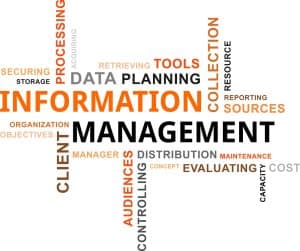
Now is the perfect time for organizations to look at tools that make use of RPA, AI, and ML to automate tasks that are still manual.
There’s no doubt that COVID-19 brought out the best in many IT departments. The shift from a primarily office-based setting with a smattering of telecommuting to a predominately remote-work environment that happened almost overnight required huge amounts of speed, agility, and skill. And most IT departments delivered admirably, using existing information management tools to set up remote access, implement ad hoc user training, and provide end-user support with the patience of a saint.
But working away from the office requires much more than just remote access to the corporate network. Remote workers need access to all of their regular work tools — email, information systems, CRM and ERP systems, and more — and COVID-19 put the strengths and weaknesses of those systems on full display.
We all know that a crisis breeds innovation, and many organizations had little choice but to implement make-shift solutions to equip an unprecedented number of their employees moving into remote-work situations. But have some of these patchwork systems opened companies up to security and compliance challenges?
With businesses starting to bring people back to the office, most of them are doing so while still managing remote and hybrid workforces. Without a strong foundation for information management in place, it will be a difficult transition.
Here are five best practices that enable organizations to create the optimal post-pandemic digital workplace for supporting the requirements of today’s “hybrid workforce” while still ensuring organizational security and adaptability.
See also: Cloud Data Offers Airlines a Way to Fly High Post-Covid
1) Go Remote-First
There was a time when “mobile-first” was the goal for new IT systems, but in the post-pandemic workplace, mobile is not enough. The modern enterprise must assume that every business system requires remote access from this point forward. Of course, IT departments do have the option to fall back to the in-house IT systems used before the pandemic, but this is a regressive course of action. The dynamic and hybrid workplace environment, with workers spending some time in the office and some working remotely, is the new normal. To deliver a seamless and effective end-user experience, organizations must provide remote-first tools for all aspects of business life.
See also: COVID-19 Data Tsunami Ushers in Unprecedented Opportunities
2) Automate Everything with Regard to Information Management
According to McKinsey, “COVID-19 has pushed companies over the technology tipping point—and transformed business forever.” This transformation has seen the digitization of many outdated and manual systems and processes, but many still have a way to go. Simply turning a manual process into a digital process does not necessarily add value. Now is the perfect time for organizations to look at tools such as Robotic Process Automation (RPA), Artificial Intelligence (AI), and Machine Learning (ML) to automate tasks that are still manual – even in our new remote world. The rekeying of data between systems, manual manager approvals, and the old-school way routing of documents and data inside of business processes are all examples of significant inefficiencies in the new digital world that can be readily solved using modern Intelligent Document Processing (IDP) systems.
3) Balance Security with Usability – But Prepare for the Worst
A key challenge faced by IT departments during the transition to remote working has been usability. In many cases, the legacy systems that staff used in the office could not offer remote access, so more modern, accessible solutions were rolled out as rapid replacements. These newer tools provide staff with much more intuitive and user-friendly systems, but some of them do not deliver adequate levels of security and compliance. As we move back to the office, should IT departments remove the more usable but less secure systems? Absolutely not! These tools have revolutionized the end-user experience, so removing them now would be a massively retrograde step.
However, when there is the potential for misuse and security issues, they likely will occur. Organizations need to deliver systems that staff will adopt and use but assume that those systems will be abused. In this instance, ignorance is not bliss nor an option. Organizations need to be able to identify security breaches and issues as effectively as possible. To do that, they need to implement tools and practices that…
4) Proactively Audit and Review Information Management Systems
IT departments are highly skilled at managing security. From firewalls to anti-virus tools, there are numerous ways to prevent malicious access and activities. However, few IT departments are as proactive when it comes to securing their information systems. In the days when all corporate information was stored within on-premise systems and accessed from the office, things were relatively simple. But as discussed in the previous point, as the organization learns to balance usability with security, they need to take a more proactive stance to information governance and security.
In the post-pandemic world, organizations need to consider a wide range of potential information threats. From staff saving local copies of sensitive documents to non-secure locations to the age-old risk of working from the wrong version of a document, the risks are exponentially increased as security is relaxed to increase usability. However, the same RPA, ML, and AI automation tools described above can be utilized as proactive information security guards — constantly trawling through systems, documents, and audit trails to spot security issues the instant they occur and, in some cases, even predicting issues ahead of time.
5) Continue to Innovate
The need to implement the best practices detailed above should not detract from one key fact — IT departments have delivered massive levels of innovation and ingenuity during the COVID-19 pandemic. The speed of innovation has led to some lingering issues, but this should be viewed as a necessary evil for the progress that we have seen. As we move to the next phase of the remote work revolution, true IT leaders will be looking to maintain the levels of innovation within their departments — using the situational changes as a driver to deliver even more usability, efficiency, and digital transformation across the coming months and years.
Conclusions
The manner in which countless organizations shifted their office-based workforce to a remote-first environment over a very short period of time is a testament to the adaptability of the human species. But the job is only half done.
Many organizations had to cut corners in order to deliver remote working systems at breakneck speed at the start of the pandemic, and these shortcuts are now exposing security and compliance challenges that need to be resolved. But on the positive side, the usability of remote working systems and the flexibility of a more balanced work-life arrangement has created a more empowered and engaged workforce.
In the post-pandemic workplace, enterprises need to maintain the positives that have come from remote work while countering the security and compliance challenges. Systems that empower employees to share and process information from the office AND remotely must become the standard. By leveraging modern tools and systems, IT leaders can build the organization of the future that allows users to make informed, consequential decisions much faster and on a much wider scale than ever before — whether they are in the head office, their home office, or even on the beach.





























